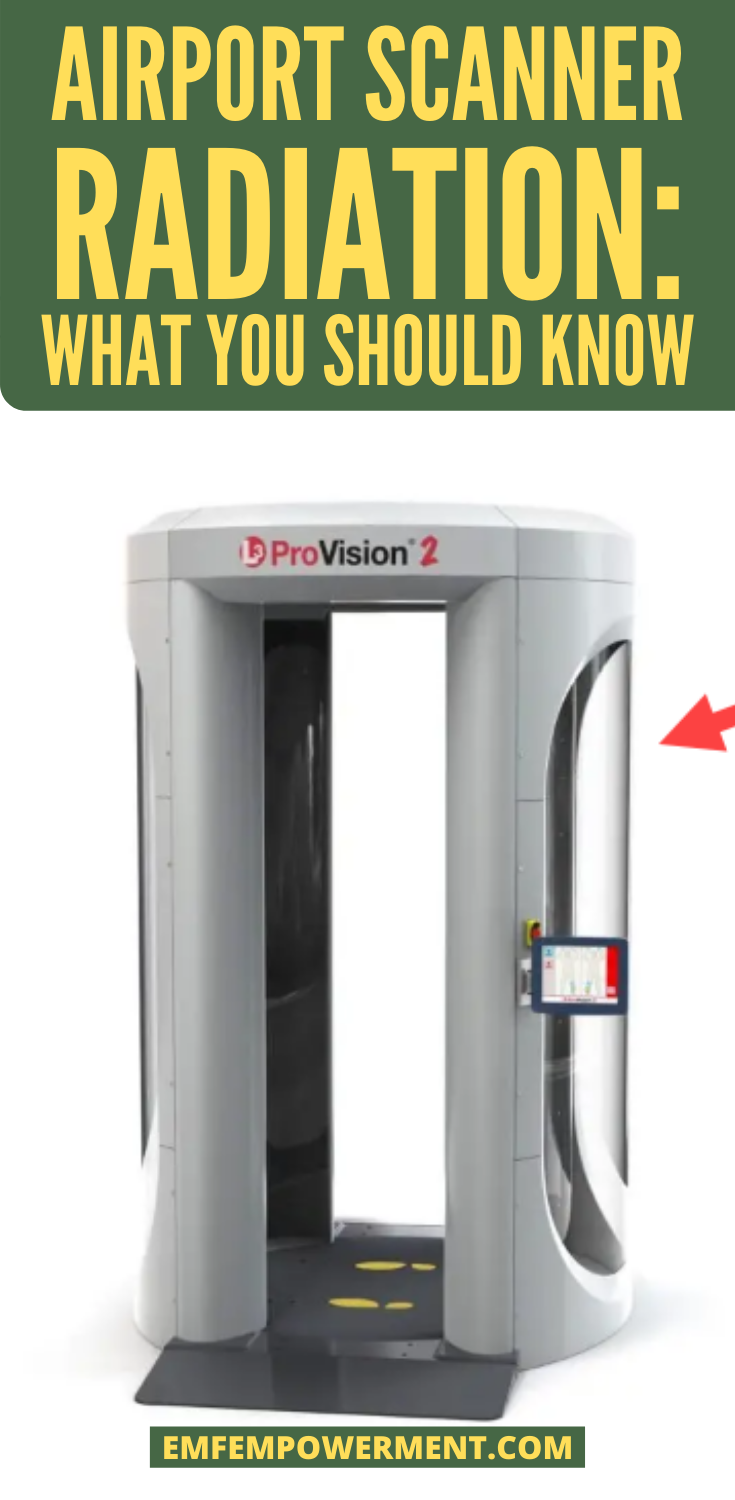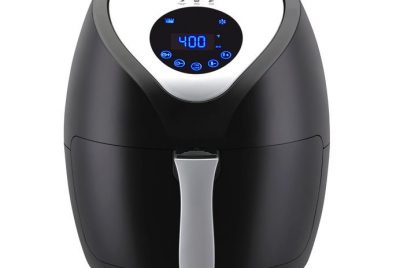On April 3, 1973, the first mobile phone was created. Since then, cell phone technology has…
Airport Scanner Radiation: Should You be Concerned?
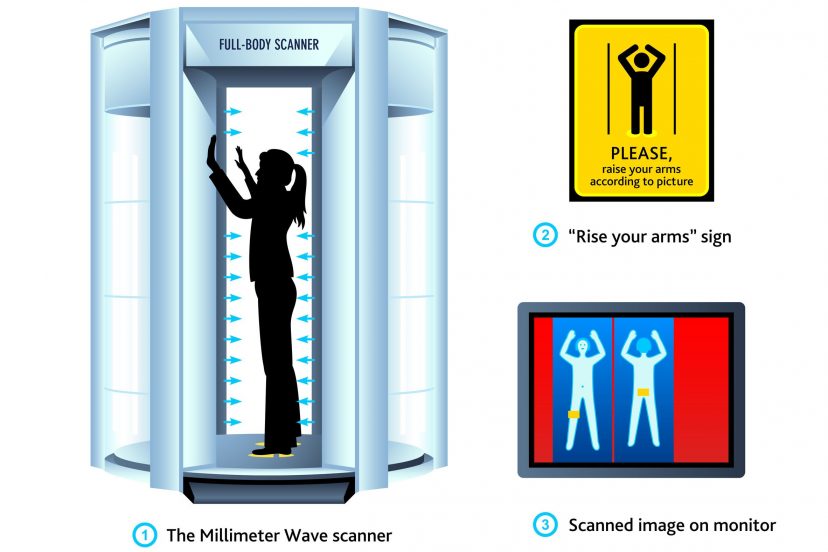
*We may earn a commission for purchases made using our links. Please see our disclosure to learn more.
If you’ve been on a plane in the past ten years, odds are you’ve experienced a full-body scan. These devices are at airports throughout the country and across the globe. So how do these scanners actually work? And, perhaps more importantly, can you trust that they are truly safe?
How do airport scanners work?
First, let’s take a look at how these airport scanners work. There are two main types of scanner you’re likely to hear about:
- Millimeter-wave scanners
- Backscatter x-ray scanners
The European Union has banned backscatter x-ray scanners at all European airports. And while they aren’t technically banned in the United States, they are not in widespread use. Rather, most of the scanners you see in airports today are millimeter-wave scanners.
Millimeter-wave scanners
Millimeter-wave scanners work by producing millimeter waves. These waves are very tiny — they fall in the 30 to 300 GHz range. If the term “millimeter waves” sounds familiar, it may be because these are the same waves that some are concerned about when it comes to high band 5G.
These millimeter waves are used to map out the human body. Millimeter-wave scanners are considered full-body scanners. If you’ve never seen one, they look sort of like a phone booth.
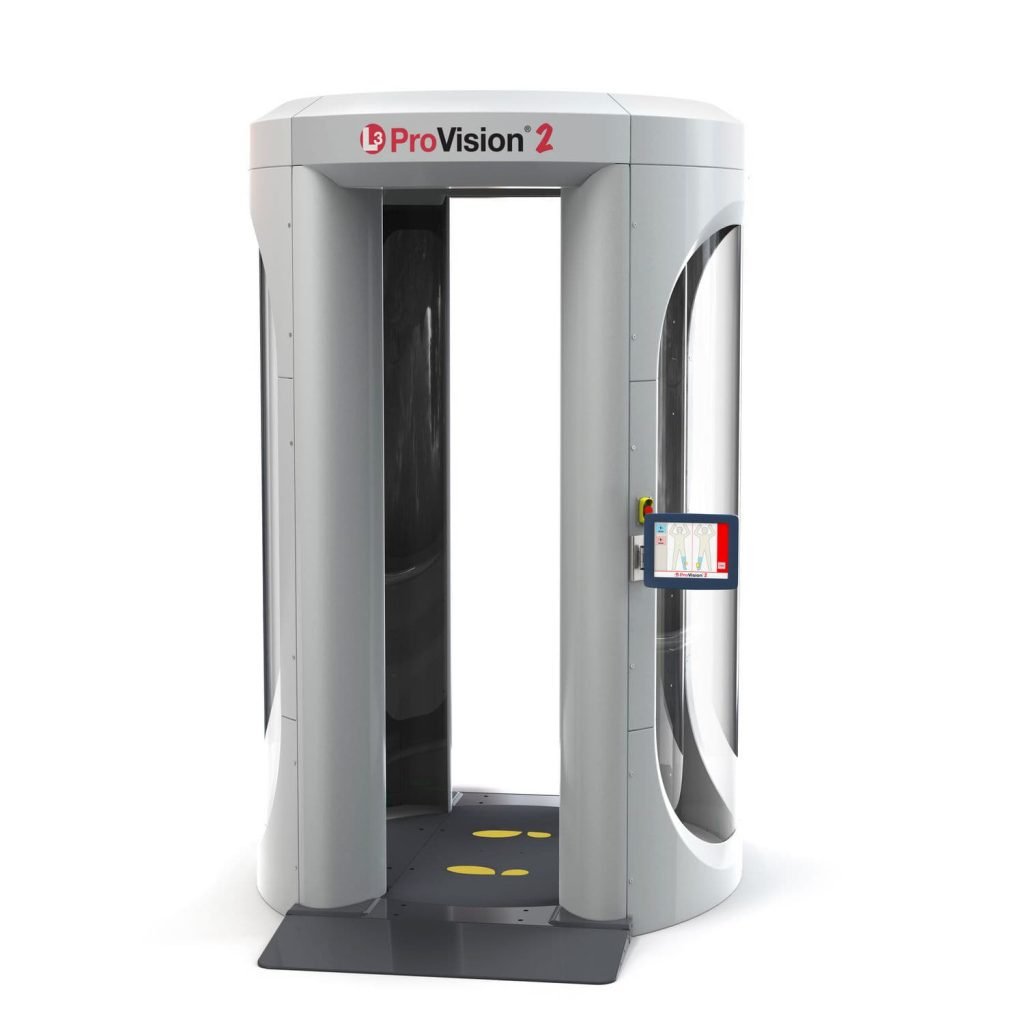
You step inside with your arms over your head, and the machine takes a snapshot image of your body using millimeter waves. The image is actually produced by dozens of discs that emit millimeter waves in small bursts. The discs are positioned on a rotating bar, allowing a full-body image to be created. This image allows security personnel to detect any hidden weapons, drugs, or other items of concern.
Millimeter waves are part of the RF band on the electromagnetic spectrum. The RF-band is non-ionizing. Non-ionizing radiation is generally considered safe because it lacks the energy necessary to alter the structure of an atom.
Is non-ionizing radiation really safe?
That’s the million-dollar question. The government tells us that yes, non-ionizing radiation is safe, at least in the doses that we are typically exposed to. However, there is some evidence to indicate otherwise.
RF-EMF radiation, the type produced by millimeter-wave scanners, has been tied to tumors in the hearts, brains, and adrenal glands of adult male rats. This study raised some alarm over the potential of RF-emitting devices such as cell phones to cause cancer in humans. In fact, the World Health Organization’s International Association for Research on Cancer (IARC) designed RF-EMF radiation as “possibly carcinogenic to humans” based on its results. Radiation in the RF range has also been tied to miscarriages, male fertility problems, and Electromagnetic Hypersensitivity (EHS).
A literature review of millimeter waves found that exposure could lead to physiological responses such as heating of tissue. Researchers examined 94 different studies for their review. They compared two main study types: in vitro (meaning it took place in a test tube), and in vivo (meaning it took place in a living organism such as a human or rat). Out of the in vitro studies, 58% of test subjects experienced a biological response to millimeter-wave exposure. Meanwhile, 80% of in vivo test subjects had a biological response. This suggests that millimeter-wave exposure does elicit a response from the body.
The reality is, small doses of exposure to non-ionizing radiation is likely harmless. The problem, however, lies in the fact that exposure is cumulative. Millimeter-wave scanners are one more drop in an already overflowing bucket. We’re already exposed by our cell phones, our smart meters, and our fitness trackers. We’re surrounded by Bluetooth and WiFi. Our exposure is not in small doses — it’s constant and significant.
If you fly every once-in-awhile, millimeter-wave scanners may be a risk you can tolerate. If you find yourself on an airplane often, however, they may warrant your concern.
Are millimeter-wave scanners effective?
We’ve established that millimeter-wave scanners could potentially be dangerous, at least for frequent fliers who find themselves regularly exposed. If they pose a threat to our health, are they at least keeping us safe?
The answer is a solid maybe. Millimeter-wave scanners seem capable of detecting items such as knives that could also be picked up by a metal detector. There has yet to be a documented terror plot that has been foiled by one of these devices, however. It’s unclear whether they offer any protection beyond that of an expensive metal detector. In fact, they have a 54% false-positive rate according to one report. This may be because the presence of sweat can trick the machine into falsely identifying a threat.
Backscatter x-ray scanners
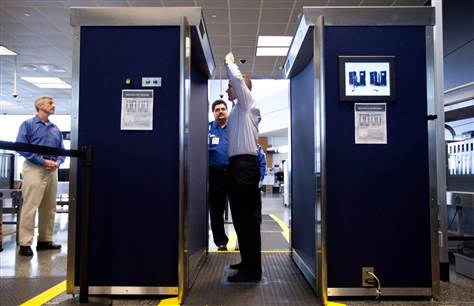
Backscatter x-ray scanners may be more accurate, but they also carry with them more risks. X-ray machines produce ionizing radiation, which is radiation that has enough energy to cause a cell to split. Ionizing radiation is generally regarded as carcinogenic and dangerous in high doses.
Backscatter x-ray machines use x-ray technology to take an image of a subject. Because of that, these machines produce small amounts of ionizing radiation. It’s estimated that you would need over 50 scans to equal the radiation produced by one dental x-ray. Regardless, to some that represents an unacceptable level of risk. For that reason, backscatter x-ray machines have faced a huge amount of public backlash.
Due in part to the public’s outcry, the European Union banned backscatter x-ray machines in 2011. Their presence in the United States continued until about 2012 when the majority of backscatter machines were retired and replaced with millimeter-wave scanners.
What can backscatter x-rays teach us?
Backscatter x-rays can teach us a valuable lesson that is applicable to millimeter-wave scanners today. The government may deem a device safe even when the research isn’t there to back that claim up. While millimeter-wave scanners are considered safe today, tomorrow they may be phased out for something else.
Should you be concerned?
Your level of concern may be dependent on how frequently you fly. If you and your loved ones rarely step foot on a plane, this may not be an issue you need to be concerned with. If, however, you’re frequently traveling for work or pleasure, radiation exposure from airport scanners could directly impact you and your health. For that reason, some concern is certainly warranted.
Let’s go back to the bucket analogy we referred to earlier. Exposure to a millimeter-wave scanner may be one drop in your bucket. If you are generally cautious about your EMF exposure and take steps in your daily life to reduce your home’s levels, your bucket may have enough room to accommodate that drop. If your bucket is already full, however, that drop may be the catalyst for your bucket to overflow.
In other words, if you’re living a life where you are regularly exposed to high levels of EMF radiation, millimeter-wave scanners may well contribute to health issues. If you have taken steps to reduce your exposure at home and at work, your body may be better able to withstand millimeter-wave exposure.
What can you do to protect yourself?
There are a few things you can do to protect yourself from millimeter-wave scanners. The most obvious solution is to simply opt-out. In the United States, this doesn’t mean that you can’t fly. You simply need to request a physical pat-down. This may bring to the surface privacy concerns, but it is the only way to truly avoid exposure.
The pat-down process is fairly painless, as you can see from this video:
In other countries, such as European nations, you can’t request a pat-down. Your options are to go through the scanner or not to fly. In those situations, you may be able to take measures to protect yourself beforehand.
There are several supplements you can take to try and counteract the effects of millimeter-wave exposure. Reishi is one commonly used supplement. This mushroom can help cells repair from radiation-related damage, possibly helping fight off cancer and shrink existing tumors. Taking a high-quality Reishi supplement prior to heading to the airport may help protect you from airport scanner radiation, as well as radiation incurred during your flight.
Final thoughts
The intention behind airport scanners is pure enough. We all want to prevent terrorist attacks, and many of us are willing to give up some degree of privacy to make that happen. However, we shouldn’t have to put our health on the line. More research is needed to determine if the non-ionizing radiation produced by millimeter-wave scanners is truly safe. And if it’s not, better technology needs to be developed.
In the meantime, consider opting out of millimeter-wave scans if it’s an option in your area. And if not, taking a Reishi supplement before heading through security may help counteract some of the potential health risks. Furthermore, don’t be afraid to speak up about your concerns to airport personnel and even your local politicians. The only way to truly make a difference is for enough of us to make our voices heard. 